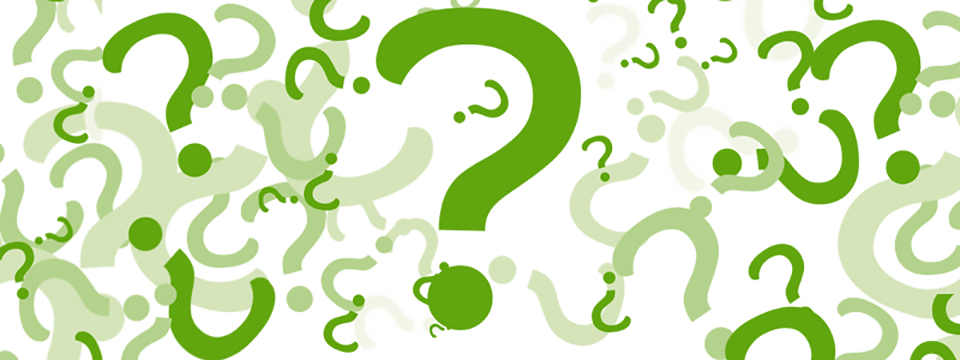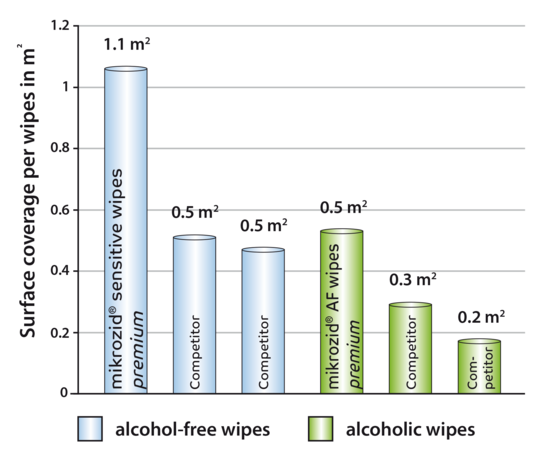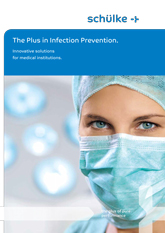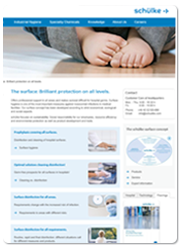Quality and reliability are two extremely important criteria for disinfectants used in medical areas. To satisfy these two aspects, schülke also tests the active substance solution pressed out of the wipes in order to rule out so-called adsorption effects – in other words the adherence of the active substances to the fibres of the wipes. In addition, the quality of the disinfectants is tested throughout the entire product shelf-life under a variety of storage conditions.

FAQ
Questions about efficacy
| Range | Bacteria | Yeasts | Viruses | Tuberculosis | Spores |
|---|---|---|---|---|---|
| mikrozid® PAA wipes | 30 sec. . - EN13727 | 2 min. - EN13624 | 15 min. - EN14476 | 15 min. - EN14348 | 15 min. - EN13704 |
| mikrozid® AF | 1 min.* | 1 min.* | 30 sec.** | 1 min.* |
|
| mikrozid® universal | 2 min.* | 2 min.* | 15 sec.** | 5 min. - EN14348 |
|
| mikrozid® sensitive | 1 min.* | 1 min.* | 1 min.*** |
|
|
* in accordance with VAH Guidelines with short contact times
** enveloped viruses in accordance with DVV (German Registered Association for Combating Viral Diseases)//RKI Guideline
*** enveloped viruses (incl. HIV, HBV, HCV)
The success of disinfection is dependent on the right choice of product. For the routine disinfection of areas with frequent contact it is sufficient to use a product that is effective against bacteria, yeasts and encapsulated viruses. The VAH List1 provides a good overview of this. Taking into account the risk of transmission of viruses, mycobacteria or spores, it may be more expedient to use a disinfectant with a higher activity spectrum. The use of such disinfectants can be meaningful especially in at-risk areas with immunocompromised patients. For example, the mikrozid® PAA wipes are being used increasingly in at-risk areas.
Peracetic acid: This reactive substance has an oxidising action and has a very wide microbiological spectrum at a low concentration and low temperature. When used on coloured metals, it may damage the material.
Alcohol: As a microbiocidal substance, alcohol offers a number of advantages. Alcohol-based stock solutions or wipes have a very rapid action and dry quickly without leaving residues. The smell of alcohol in disinfectants is well known and accepted. However, alcohol is not effective enough against some types of non-enveloped viruses and can lead to material damage on some surfaces.
QAV: Products on the basis of quaternary ammonium compounds have a high material compatibility and are already effective at a low concentration. In contrast to alcohol, QAV are not very effective against gram-negative bacteria and mycobacteria.
Yes. One major advantage of peracetic acid is that it is already microbiologically active at low concentrations and at low temperatures. Another advantage is its wide activity spectrum – from bactericidal to mycobactericidal, fungicidal, virucidal and including sporicidal. For schülke's PAA products, the development of resistances can be ruled out based on its mechanism of action.
Questions about the use
Yes. The following symbol on the packaging indicates the shelf-life after opening:
The shelf-life after opening of mikrozid® AF wipes and mikrozid® sensitive wipes is 3 months. mikrozid® PAA wipes and mikrozid® universal wipes have a shelf-life after opening of 28 days.
Yes. mikrozid® AF liquid can be used for disinfecting shoes (from the inside). The rapid onset of action against e.g. fungi (within one minute) makes mikrozid® AF liquid the perfect product for this application.
Yes. However, the rule for routine disinfection is that a surface can be reused immediately after the product has visibly dried. Exception: when reprocessing semi-critical class A medical devices that should be reprocessed virucidally, the action time has to be observed.
This also applies to surfaces that have to be rinsed with water after the disinfection, such as bath tubs or surfaces in kitchens. With some products, such as alcohol-based disinfectants, the surface has to be kept wet throughout the action time.
Yes. mikrozid® sensitive is particularly suitable for alcohol-sensitive materials. This also includes ultrasound transducers, provided they are used on healthy and intact skin. (Not suitable for the final disinfection of semi-critical medical devices).
Yes. Numerous external reports confirm the excellent material compatibility of mikrozid® AF and mikrozid® sensitive, e.g.:
| mikrozid® PAA | mikrozid® AF | mikrozid® sensitive |
|---|---|---|
| Phillips / TEE probes | KaVo / paint samples | Phillips / ultrasound transducers |
| Toshiba / TEE probes | Hartmann / blood pressure cuffs | Bayer / Vivak® clear 099 |
| Siemens / TEE probes | Vowalon coatings | Sirona / dental units |
|
|
A. Menarini Diagnostics / blood pressure monitoring | Karl Storz / endoscopes* |
*not for final disinfection
No. mikrozid® has been tested in accordance with the specifications for surface disinfectants. Instruments have to be disinfected with an instrument disinfectant by immersing the instruments in an immersion method. You can find the right product for this in the area disinfection and cleaning of instruments.
Taking into account the specifications, mikrozid® wipes can be disposed of with the household waste. The packaging may only be disposed of in the recyclable waste when completely empty. Packaging materials can be returned via the country-specific recycling systems (e.g. Der Grüne Punkt).
Yes. According to the "Rules for Occupational Safety and Health" published by the German employers' liability insurance association (BG), disinfection of contaminated surfaces and objects is classified as a task requiring protective measures equivalent to protection level 2. This includes in particular thin, liquid-tight, chemically resistant and low-allergen gloves. This rule applies to all disinfectant wipes currently on the market. Wipes that have been attested as safe for skin are exempt from this rule.
Exception: Themikrozid® universal wipes are an exception, because these wipes have been dermatologically tested and can be used without hesitation with bare hands. This is subjected to the individual facility’s Occupational safety and infection prevention regulation.
No. Peracetic acid is not known to have allergenic potential.
No. Peracetic acid has no mutagenic potential and has not been classified as carcinogenic, mutagenic, teratogenic or toxic to reproduction by either the European Union (EU) or the Committee on Hazardous Substances.
Questions about material compatibility
mikrozid® AF provides protection in areas with an increased risk of infection. It meets the requirements of short action times, e.g. on patient treatment units and surfaces of medical equipment.
mikrozid® universal can also be used on sensitive surfaces that require a stronger efficacy (such as displays of smartphones and tablets).
mikrozid® sensitive is particularly suitable for use on alcohol-sensitive surfaces (such as Plexiglas and ultrasound transducers).
mikrozid® PAA wipes are not only suitable for use in high-risk areas, but can also be used effectively in the event of an outbreak.
Other questions
Wipes that are soaked in active substance solution or dry wipes in dispenser systems offer an array of advantages.
- Using disposable wipes rules out the risk of cross-contamination, which can occur with reusable wipes.
- Due to the use of microfibre wipes made of mixed fabric, active substance adsorption cannot always be ruled out when using reusable wipes. For disposable wipes, this risk is ruled out as long as only the disinfectants tested by the manufacturer are used.
- The quality and shelf-life of the soaked wipes is tested multiple times by conscientious manufacturer and thus has a very high standard.
- Spray disinfection can lead to gaps in wetting. Furthermore, this form of disinfection releases aerosols that are breathed in by the user.
- Worldwide, more than 50 countries rely on the safe disinfection power of mikrozid®. This includes, among others, Japan, Singapore, England, Romania, the Netherlands, South Africa and Russia.
- In 2010, 2011 and 2012, as many mikrozid® wipes were used across the globe to disinfect a surface area of around 60,000,000 m². This is equivalent to the surface area of New York City!
* The reach per wipe is dependent on the environmental conditions and the surface structure of the surface being wiped.
mikrozid® PAA on the basis of peracetic acid, suitable for outbreaks, sporicidal within a short period of time.
mikrozid® AF on the basis of alcohol, meets the requirement of short action times.
mikrozid® universal slightly alcohol-based active substance solution that can be used universally on surfaces and is extremely versatile with very good material compatibility.
mikrozid® sensitive with an alcohol-free active substance solution, particularly suitable for use on alcohol-sensitive surfaces (such as Plexiglas and ultrasound transducers).
Only natural alcohol is "nadschis" (impure), such as the alcohol contained in wine, but not synthetic alcohol which is contained in e.g. mikrozid® AF liquid. This means that objects that come into contact with synthetic alcohol remain pure.
Disinfection in businesses that process foods can thus be done with such products without rendering the surfaces impure. However, in the general interest it should be ensured either by means of thorough drying or rinsing that disinfectants do not get into the actual foods.
The products and services presented on this microsite are not available in every country. If you have any questions or comments please contact one of our subsidiaries or your local distributor for more information.





